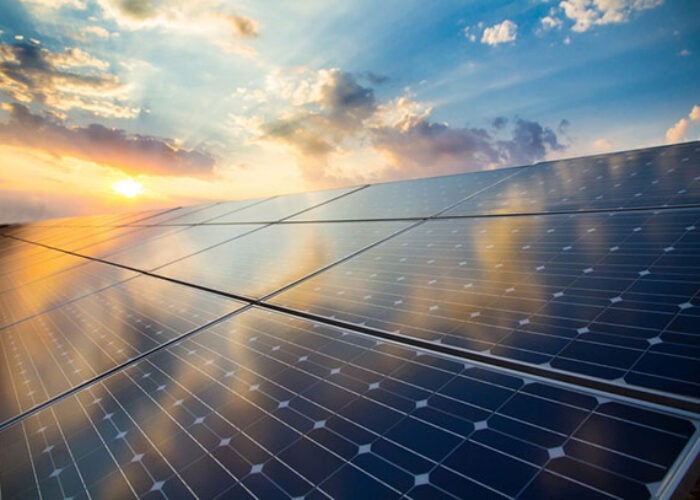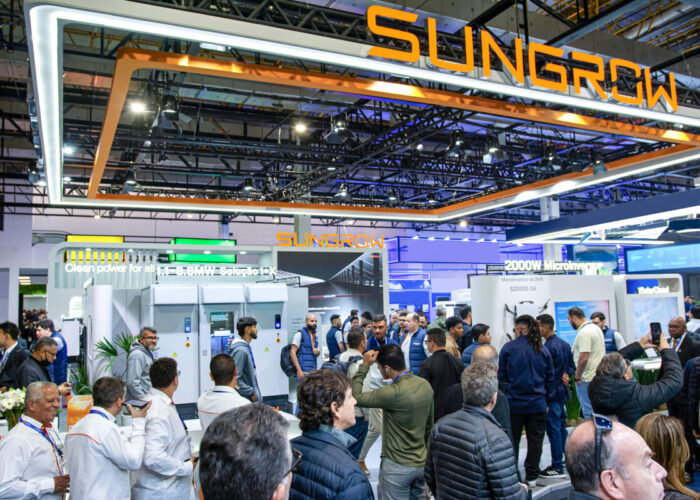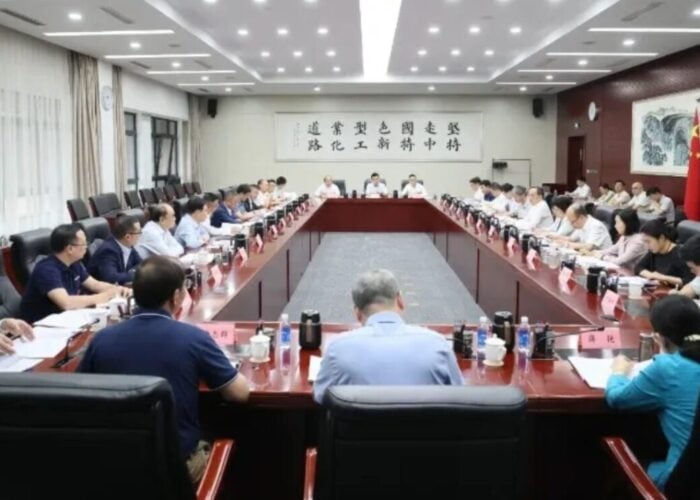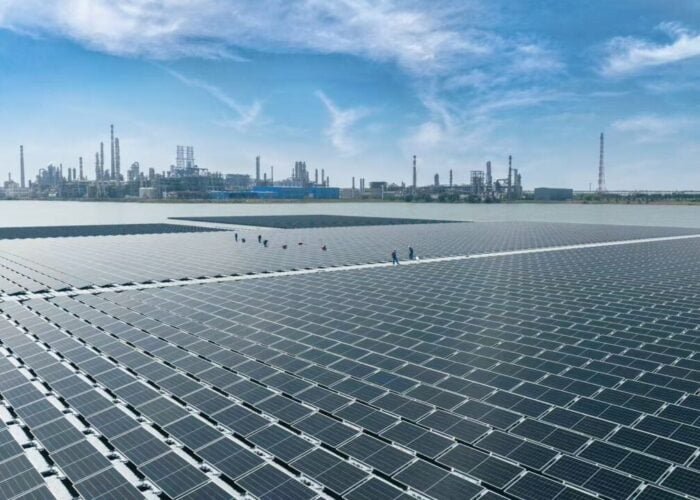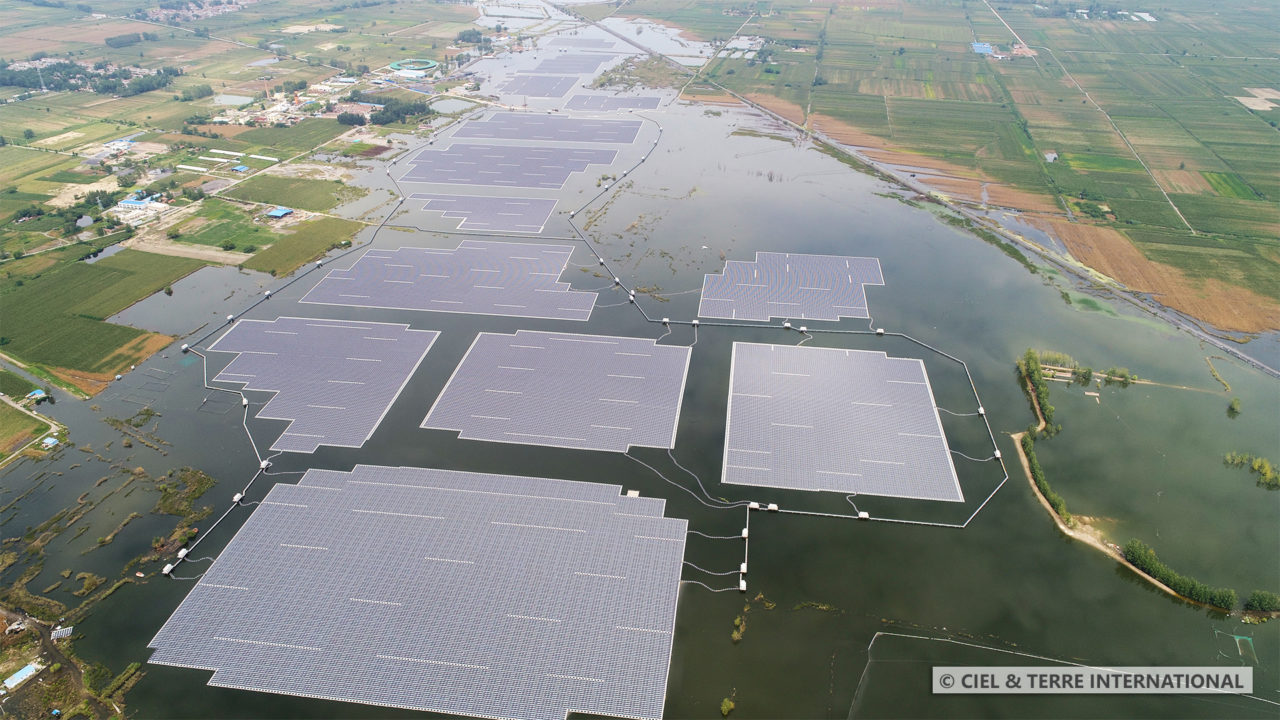
Chinese state-owned developer CECEP has completed a 70MW floating solar project – the largest in the world – at a former coal-mining area of Anhui Province, China, in collaboration with French floating solar specialist Ciel & Terre.
The project, spread across 13 separate islets on an area of 140 hectares, was completed in late 2018, with grid-connection, tests and commissioning carried out this month at the project site in the Lianghuai mining subsidence area, Yongqiao District, Suzhou City.
Unlock unlimited access for 12 whole months of distinctive global analysis
Photovoltaics International is now included.
- Regular insight and analysis of the industry’s biggest developments
- In-depth interviews with the industry’s leading figures
- Unlimited digital access to the PV Tech Power journal catalogue
- Unlimited digital access to the Photovoltaics International journal catalogue
- Access to more than 1,000 technical papers
- Discounts on Solar Media’s portfolio of events, in-person and virtual
EPC services were provided by China Energy Conservation Solar Technology and the China Energy Engineering Group Shanxi Electric Power Design Institute. A brand new 18km 110V overhead line was also built for the grid connection of the plant, which is expected to generate up to 77,693MWh of electricity in its first year, equivalent to the power consumption of nearly 21,000 households.
While the complete facility in Anhui is said to currently be the largest floating PV plant on the same reservoir in the world, nearby, China-based firm Three Gorges New Energy has already partially connected a 150MW floating PV project to the grid, which is likely to become the largest plant globally once fully commissioned.
Equipment
The CECEP system was built using Ciel & Terre's Hydrelio floats, which are locally produced to minimize emissions, optimise logistics costs and offer local employment.
The project uses monocrystalline modules from Chinese manufacturer LONGi Solar, as confirmed by a C&T spokesperson to PV Tech. Central inverters have also been put on stilt platforms on the shoreline of the quarry lake so as not to interfere with neighbouring farm activity. Concrete poles support the electrical installation and 1,500 helical anchors were used for the project and buried at an 8-15 metre-depth to match the water body.
Ciel & Terre has already supplied its floating structure solution to GCL's 32MW FPV plant in Anhui province. It has also recently supplied a 9.8MW PV project featuring rooftop and floating elements in Cambodia.

